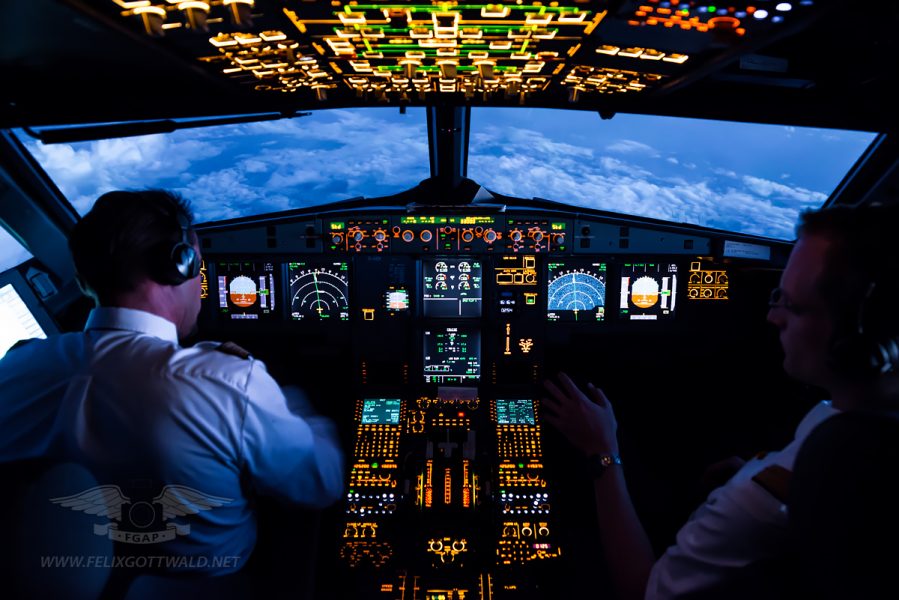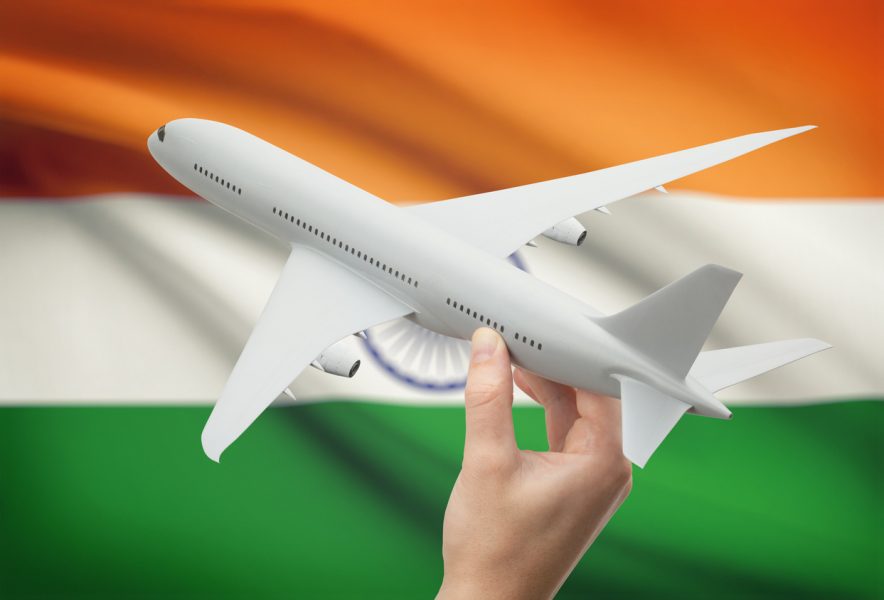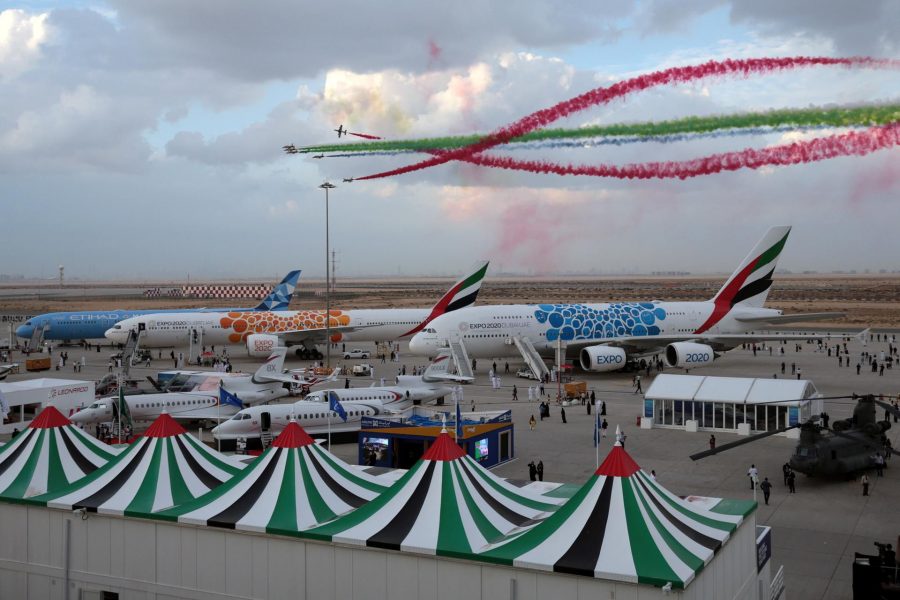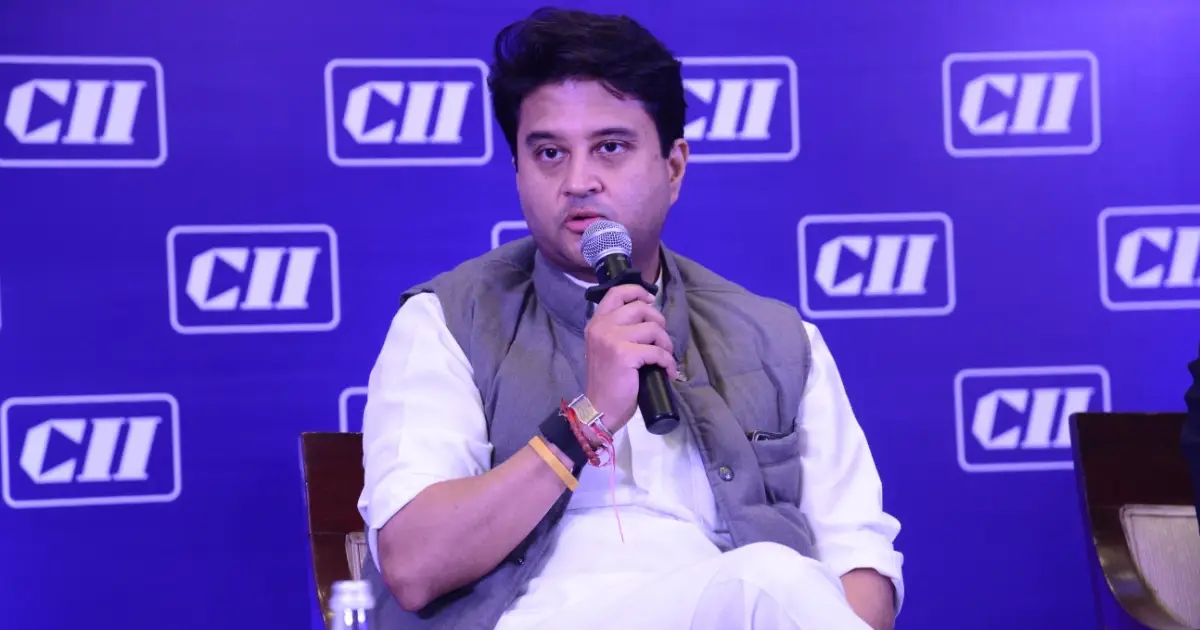Go First's IPO will take place on December 8, with proceeds going towards debt reduction
Radhika Bansal
20 Nov 2021
GoAir, rebranded as Go First, is planning to raise INR 3,600 crore from its initial public offer (IPO) and launch its share by December 8.
The company will use the proceeds to reduce its debt exposure, pay oil companies and lessors, Business Standard reported on November 19, citing a company source.
The company's IPO anchor issue is scheduled to launch on December 7. GoAir had filed an addendum to the draft red herring prospectus earlier this month intending to make part payment of outstanding lease rental, maintenance, repair and overhaul of aircraft.
(Image Courtesy - Curly Tales)
The company is looking to pay INR 443.97 crore on the outstanding payment to the aircraft lessors CDB Aviation Lease Finance DAC, Jackson Square Aviation Ireland Limited and ACG Acquisition Ireland III Ltd, according to Moneycontrol.
Meanwhile, the company also looks to pay INR 96.3 crore out of the outstanding maintenance amount from the proceeds to MTU Maintenance Zhuhai Co Ltd.
The company had posted a net loss of INR 923 crore in April-September of the current financial year.
The Wadia group-controlled airline is working on cost-saving measures and evaluating the higher-capacity Airbus A321neo aircraft to deal with losses due to amortisation of aircraft leases and higher fuel costs.
(Image Courtesy - Curly Tales)
However, with the easing of lockdown restrictions, massive reduction in fresh COVID-19 cases and growing vaccination coverage, the airline saw its revenue in the first half double to INR 1,202 crore on a year-on-year basis due to increased capacity.
Go First achieved an EBITDAR (earnings before interest, depreciation, tax, amortisation, and rentals) margin of 13.9% in the July-September, aided by 53% revenue growth in the period, a source said.
The domestic aviation industry is expected to post a 45-50% growth in FY22 in domestic air passenger traffic, and the international air passenger traffic is expected to grow at 80-85% during the same period, according to ICRA.
Read next
Alpha... Bravo... Charlie... Delta...| The origin and what led to the formulation of these phonetics
Prashant-prabhakar
19 Nov 2021

In simple words, these words were formulated for the very specific need for ease of communication within the aviation fraternity. Pilot communication with the ATC and ground control is subject to a lot of static and other interférences which can critically hamper flight operations.
Hence ICAO came up with the International Radiotelephony Spelling Alphabet to simplify communications via radio/telephone lines and avoid potential misunderstandings involving the use of letters and numbers.Thus resulting in what is now referred to as the ICAO Phonetic Alphabet or the NATO Alphabet. It is a set of alphabets universally used by the military, police, airline pilots and others working in the aviation and travel industry alike.
But was it always like this? Not exactly.
Brief history and the evolution of the code
The early 1920s
NATO
The first set of phonetic alphabets to be recognized globally was released by the International Telecommunication Union (ITU) and it featured names of cities from around the world.
Amsterdam, Baltimore, Casablanca, Denmark, Edison, Florida, Gallipoli, Havana, Italia, Jerusalem, Kilogramme, Liverpool, Madagascar, New York, Oslo, Paris, Quebec, Roma, Santiago, Tripoli, Uppsala, Valencia, Washington, Xanthippe, Yokohama, Zurich.
1941
Representative | Wikimedia
The United States military devised a separate alphabetic code, named the Able Baker alphabet, after the first two codes of the alphabet :
Able, Baker, Charlie, Dog, Easy, Fox, George, How, Item, Jig, King, Love, Mike, Nan, Oboe, Peter, Queen, Roger, Sugar, Tare, Uncle, Victor, William, X-ray, Yoke, Zebra
Two years later, British Royal Air Force adopted the Able Baker alphabet system for its operations as well.
1948
ICAO began collaborating with Jean-Paul Vinay, a linguistics professor at the Université de Montréal, to formulate a new spelling Alphabet that could be adopted globally and which would follow all the 3 following rules:
1. Each word would be "live" with similar spellings in English, French and Spanish2. Could be easily communicated over the radio without any confusion3. Words with a negative connotation would be avoided
After innumerable comprehension tests involving 31 nationalities, the final draft for the newly devised set of alphabets was ready.
The revised alphabet was then adopted on 1 November 1951 and came into use for civil aviation on 1 April 1952. (Very similar to the one in use today)
Alfa, Bravo, Coca, Delta, Echo, Foxtrot, Gold, Hotel, India, Juliett, Kilo, Lima, Metro, Nectar, Oscar, Papa, Quebec, Romeo, Sierra, Tango, Union, Victor, Whiskey, eXtra, Yankee, Zulu
As can be seen from the list above, the need for a universal phonetic alphabet remained.
Reviews by the NATO Allies, US and UK called for a change in the words for the letters C, M, N, U, and X.
1956
With further approvals from the ICAO, the new Phonetic Alphabet was made effective in NATO on 1 March 1956.
The ICAO phonetics is also known as the NATO Alphabet as it was the NATO allies who initiated the final revision of the draft as we know it today.
Did you know? "eXtra" was dropped in 1956 which was the only word that didn’t begin with the letter it represented"Delta" is replaced by Dixie at Atlanta Airport, where Delta Airlines is based"Lima" is replaced by ‘London’ in some areas, such as Malaysia, where ‘Lima’ means ‘five"Juliett" is always spelt like this to make it obvious to French speakers that it’s a hard ‘t's sound at the end, rather than silent
This is how the numbers are pronounced | FutureSailorsToolKit
COVER: Felix Gottwald
Read next
Domestic air passenger volume spikes 70.5% in October as India becomes the third-largest domestic aviation market in the world
Radhika Bansal
19 Nov 2021

Domestic air passenger volume spiked 70.46% in October to 89.85 lakh over the same month of 2020, DGCA data showed on Thursday, November 18.
The Indian carriers had flown 52.71 lakh passengers in October 2020.
It may be recalled that domestic traffic along with international flight services remains shut for two months till May 25, when scheduled air services were resumed in a graded manner. Scheduled international flight operations to and from India remain suspended as of now.
IndiGo in October 2021 flew 48.07 lakh passengers, accounting for 53.5% of the total domestic traffic. Whereas, Air India, which is now set to go to its new owner Tata Group, transported 10.61 lakh passengers with an 11.8% market share, according to data.
Full-service carrier Vistara, which is the Tata-SIA joint venture airline, flew 6.96 lakh passengers during October, cornering 7.8% of the total pie. Budget carrier AirAsia India carried 5.72 lakh passengers in the previous month and had a market share of 6.4%, according to DGCA data.
The two other carriers Go First (erstwhile GoAir) and SpiceJet transported 8.84 lakh and 8.10 lakh passengers, respectively, in October 2021, weaning away 9.8% and 9% share of the total domestic passenger traffic.
In terms of average on-time performance or time punctuality in operations from the four key airports Delhi, Mumbai, Hyderabad and Bengaluru, market leader IndiGo delivered the highest OTP at 88.8% flowed by Vistara with 88.1% and AirAsia India 86.9%, as per data.
Third largest domestic aviation market
Civil Aviation Minister Jyotiraditya Scindia said on Thursday, November 18 that India has become the third-largest domestic aviation market in the world.
Speaking at a curtain raiser event on 'Wings India, 2022', Scindia said that India presently handles the third-largest domestic traffic after the US and China.
"We all know that in this densely globalised economy, air transport is a key element in the country's transport infrastructure and plays an important role in the country's economic growth," he said.
The minister said that the overall freight handled by the country's airports during the first two-quarters of FY22 (combined) has recovered to more than 80 per cent (15.36 lakh MT during April-September FY22) of the pre-pandemic level, despite the country being hit by a severe second wave in the first quarter.
"To bring the benefits of the Civil Aviation to the common people and provide affordable air connectivity, Government of India had announced Regional Connectivity Scheme (RCS) - UDAN (Ude Desh Ka Aam Nagrik) on 21st October 2016. As of date, 387 routes connecting 62 Airports including 6 Heliports and 2 Water Aerodromes have been made operational under RCS-UDAN Scheme," he said.
The 'Wings India, 2022' to be held in Hyderabad is slated to be Asia's largest event on civil aviation.
Read next
Dubai Airshow 2021 comes to an end. Let's have a look at the top deals at the aviation summit
Radhika Bansal
19 Nov 2021

Airbus kicked off the 2021 Dubai Air Show with a bang, landing massive deals from day one.
Held at Al Maktoum International Airport at Dubai World Central from November 14 to 18, Dubai Airshow 2021, the biggest-ever, attracted 1,200 exhibitors with 371 new companies. As many as 148 countries took part in the event, and 13 of them for the first time, fortifying the event’s status as a global event. The show also featured more than 160 of the world’s most advanced aircraft on the ground and in the air.
Dubai Airshow 2021 (Image Courtesy - Airways Magazine)
The French aerospace manufacturer had amassed 408 announced orders and commitments by the end of the show’s fourth day, while its American counterpart Boeing trailed with 101. Airbus and Boeing are the world’s two largest aerospace companies by revenue.
The order numbers so far from the first major air show since the Covid-19 pandemic began are a positive sign for aviation and travel, which suffered devastating losses for much of the last 18 months. “We view orders for new aircraft as positive for the recovery of the commercial aerospace industry,” Morgan Stanley said.
(Image Courtesy - Khaleej Times)
Airbus scored its first big win on day one of the air show, with an order for 255 of its narrow-body A321neo and A321XLR jets from American private equity firm Indigo Partners, which buys planes for low-cost carriers like Frontier, Wizz Air, Jetsmart and Volaris.
The Indigo Partners deal includes:
Wizz Air – 102 aircraft (75x A321neo + 27x A321XLR)Frontier – 91 aircraft (A321neo)Volaris – 39 aircraft (A321neo)JetSMART – 23 aircraft (21x A321neo + 2x A321XLR)
(Image Courtesy - Airbus)
The deal from Indigo Partners, the first major aircraft order since the pandemic began, was a “very positive signal that we [are starting] to be on the front foot again,” Airbus CEO Guillaume Faury.
It then notched a letter of intent from Air Lease Corp, set to be finalized in the coming months, for 111 aircraft across the Airbus product range.
ALC’s order includes:
25x Airbus A220-30055x Airbus A321neo20x Airbus A321XLR4x Airbus A330neo7x Airbus A350F
ALC became the first customer to order the A350 freighter. (Image Courtesy - Airbus)
Kuwaiti airline Jazeera Airways committed to 28 Airbus A321neos, and Nigeria’s Ibom Air committed to its first Airbus purchase with an order for 10 A220s.
The popularity of narrow-body jets at this year’s air show came as a surprise to some analysts, who say the Middle East event is more known for orders of wide-body planes used for longer-haul flights.
On the military side, Airbus also sold two A330 Multi Role Tanker Transports (MRTT), an aerial refuelling tanker aircraft, to the UAE Air Force and Air Defense, and clinched a new export order for two A400M airlifters from the Indonesian Ministry of Defense.
Boeing was not far behind
Boeing saw some relief with a large order of 72 of its 737 Max from the new Indian airline Akasa Air. It also had success with freighters, with orders for 11 of its 737-800BCF cargo planes from aircraft leasing company Icelease, nine converted 767-300BCF freighters from DHL, and orders for two of its long-range 777F freighters from Emirates SkyCargo.
Akasa Air's CEO Vinay Dbue with Boeing's CEO Stan Deal (Image Courtesy - Boeing)
The American aerospace giant also received four orders of passenger planes and freighters from Air Tanzania and three of its widebody 777-300 passenger jets from UAE-based aviation services provider Sky One FZE.
We expect more orders before the year-end, says Boeing executive vice president
Cargo planes and converted freighters are a hot sub-sector of the aviation industry as e-commerce booms and air shipment grows. Cargo is the only air traffic segment that has gone above 2019 levels. For Dubai’s flagship carrier Emirates Airline alone, cargo operations in its latest half-year earnings were robust, seeing a 39% increase and bringing the business to 90% of the volume it had pre-pandemic.
The company plans to add three conversion lines — facilities that convert aircraft to freighters — for its 737-800BCF across North America and Europe.
Boeing 777X at display. (Image Courtesy - Sam Chui)
Boeing has long dominated the air cargo market, but it's French rival Airbus could threaten that with its A350F, a cargo version of its widebody passenger A350-1000, ordered for the first time in Dubai this week. Emirates president says the airline is making a profit — despite 80 aircraft still on the ground.
Boeing’s much-anticipated 777FX — the freighter version of its long-range widebody 777X passenger jet — did not launch at the Dubai show. Boeing has also been facing criticism from Emirates President Tim Clark over delivery delays and technical problems with its 777X, which Emirates has ordered but whose delivery has been pushed back to 2023.
(Image Courtesy - Emirates Airlines - Twitter)
The iconic American manufacturer hasn’t been viewed as having a winning performance at a Dubai Air Show since 2017 when the company clinched a major sale of 40 787-10 jets to Emirates Airline at a value of $15.1 billion on the show’s first day alone.
Ahead of the 2019 Dubai Air Show, Boeing’s sales were badly hit following two catastrophic crashes of its popular 737 Max jet in less than five months. Its fleet of roughly 400 737 Max jets around the world was grounded for nearly two years.
Other sales
Abu Dhabi-based defence conglomerate Edge, whose exhibitor stand was among the biggest at the site, signed a slew of deals during the event. The latest included an agreement with weapons maker Israel Aerospace Industries to jointly develop advanced unmanned surface vessels for military and commercial use.
Russia displayed a prototype of its new fifth-generation warplane, the Sukhoi Su-75 Checkmate, for the first time outside the country.
Sukhoi Su-75 Checkmate (Image Courtesy - The National Interest)
Russia State-owned Rostec revealed a perfume to commemorate the Checkmate's international debut in a YouTube video.
"Checkmate is a fifth-generation fragrance for masters of the game," the video says, revealing the Checkmate aircraft against the outline of a black knight chess piece. A full-size bottle appears through the rotating metal engine blades, a gift box unfolds into a black-and-white chessboard to highlight the slogan 'Turn the Chessboard'.
Russia presented the Checkmate as a cost-efficient fighter jet with flight speeds of Mach 1.8 and a range of 2,800 to 2,900 kilometres.
Private jet sales expected to take off as manufacturers see huge interests at Dubai Airshow 2021.
$235 billion worth of new executive jet deliveries expected before 2030 according to a Honeywell Global Business Aviation report and Mohammed bin Rashid Aerospace Hub also reported a 336% increase in the movement of private and business aircraft compared to 2020.
One of the most popular private jets on the market is on display at Dubai Airshow — the Bombardier Global 7500. Priced at $75 million and considered the industry flagship.
Read next
The government wants Indian carriers to launch long-haul international flights from India and create aviation hubs in India, Aviation Minister Jyotiraditya Scindia said on November 18.
Speaking at a summit organised by industry body CII, Mr Scindia also said that he aims to make India an aviation hub.
Further, Mr Scindia noted that a process is being followed and there has to be a dialogue with other ministries before deciding on overseas flight operations.
Union Minister for Civil Aviation, Jyotiraditya M Scindia addressing at the CII Global Economic Policy Summit 2021. (Image Courtesy - Daily Excelsior)
Domestic flights have been allowed to operate with full capacity in October.
“I want an (aviation) hub created in India for Indians. We would not want aviation hubs outside India,” Scindia said at a CII conference.
The Modi government, since it has come to power in 2014, has been of the view that foreign carriers are flying out a large number of passenger traffic flying to Europe and the Americas through their hubs in the Middle East and Southeast Asia.
This government has also put a hold on any increase in foreign flying quota for several countries and has also discussed ways to reduce the existing quota, which may be very difficult.
The government under the current bubble arrangement with several countries have also put a ban on airlines carrying sixth freedom passengers (a passenger flying to London from New Delhi via Dubai or any other hub).
At the 'Global Economic Policy Summit 2021 Rebuilding Economies' organised by CII, Mr Scindia also asserted that the civil aviation ministry wants to be a constructive collaborator and not a restrictive regulator.
On the return of international flights, Scindia said that they are in discussions with several ministries and a decision will be taken once the environment is safe. “Let me commit to you that we are evaluating it (resuming international flights)… but let’s not forget about the impact of COVID… we want to go back to normalcy but in a safe environment,” he said.
"Let me commit to you that we are evaluating that process. We want to return but keeping in mind what is happening in the world... today what is happening in Russia, parts of Europe, they are going through a fourth wave with a vaccine. Let us not erase our short term memories so soon," the minister said.
India banned regular international flights in March 2020 due to the rising number of COVID cases in the country and around the world. It resumed limited international flights through Vande Bharat flights and eventually under bubble flights.
Cover Image - First India
Read next
Minister of Civil Aviation Jyotiraditya Scindia said on November 18 that so far, seven states including union territories have reduced the value-added tax (VAT) on jet fuel to below 4% from earlier levels to support the cash-strapped Indian airline industry.
The UTs of Jammu and Kashmir, Ladakh, Andaman and Nicobar along with the Uttarakhand, Himachal Pradesh, Madhya Pradesh and Haryana state governments have reduced VAT on jet fuel, he said at the CII Global Economic Policy Summit 2021 summit in Delhi.
The ministry is in active discussions with all other states to reduce VAT on jet fuel prices, and the chief minister of Tripura has also committed to reducing VAT on jet fuel soon, according to the minister.
Reducing VAT on jet fuel has been one of the major objectives of the ministry since Scindia took over the industry in August. The central government since September has been negotiating with the state governments to reduce the tax rate for the aviation industry, which is still recovering from the aftermath of the COVID-19 pandemic.
Scindia said that a major reason for airlines' losses is the high cost of ATF. Jet fuel prices are high due to rising base price and "very high VAT imposed by state governments", which currently ranges from 4% to 30%, he said.
In August, to give impetus to air travel, Union Minister for Civil Aviation, Jyotiraditya Scindia has written a letter to 22 States/ UTs urging them to rationalize VAT on ATF across all airports in States within the range of 1% to 4%. He has asked them to take forward common intention to boost air travel and connectivity in State to accelerate its economic development.
(Image Courtesy - Team-BHP)
The Aviation Minister further said that his ministry is currently evaluating the process of normalising international scheduled flight operations.
Safety remains a priority for the MoCA and it will take steps to open up international air travel as and when the COVID-19 pandemic subside around the world, he added.
Scheduled international passenger flights to and from India remain suspended since March last year amid the coronavirus pandemic. India has air bubble arrangements with more than 25 countries for operating international flights.
Scindia added that he expects the aviation industry in India to grow exponentially once the pandemic is truly a thing of the past.
He said that in the next five years the Indian aviation fleet will grow at a Compound Annual Growth Rate (CAGR) of 30-40%.
The Indian aviation fleet will grow to around 2,000 planes in the next 10 years, Scindia said, while stressing the importance of improvement in all aspects of the local aviation industry together for the country to become a hub for global aviation.
The ministry is willing to work with aircraft manufacturers to boost aircraft manufacturing in the country, the minister said.




Comment